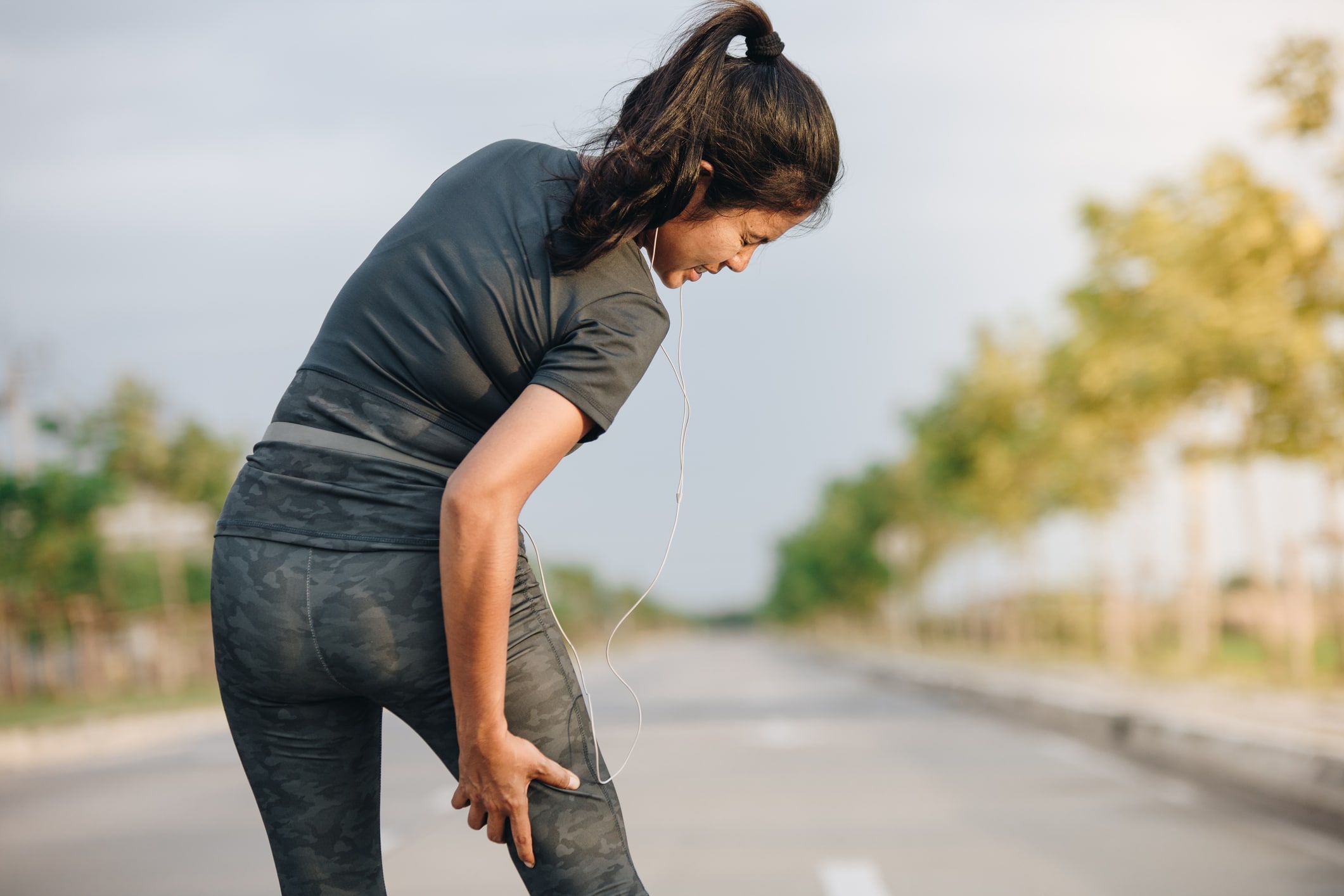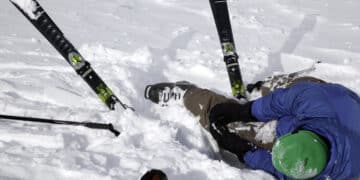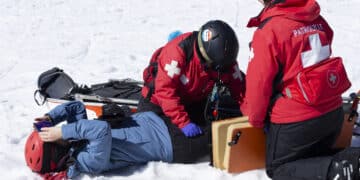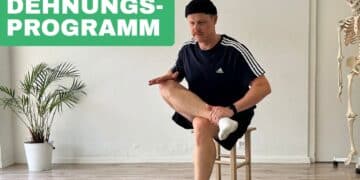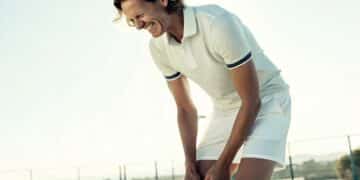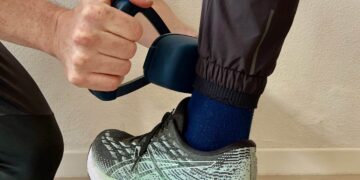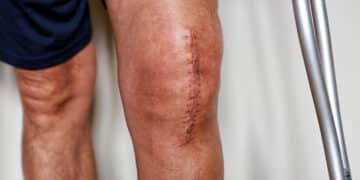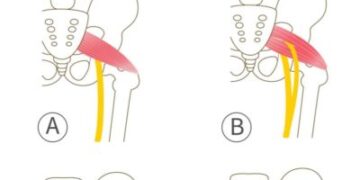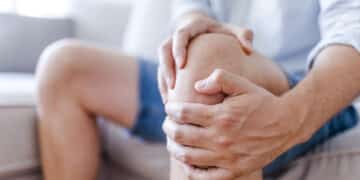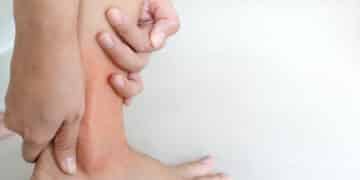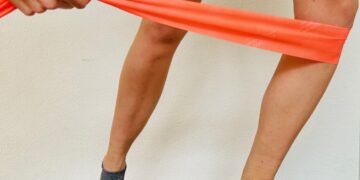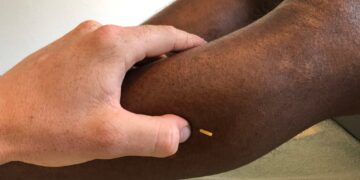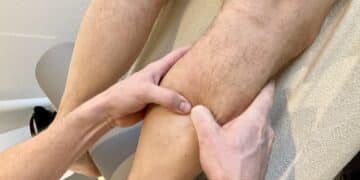Hamstring injuries
Hamstring injuries: Prevention, symptoms and rehabilitation of the back of the thigh
The Hamstrings - also known as the ischiocrural muscles - play a central role in the mobility and stability of the Back of the thigh. Whether sprinting, jumping, changing direction or kicking: The hamstrings are indispensable in almost all sports. Especially the Biceps femoris as part of this muscle group, is frequently affected by injuries. But why is this the case, how can complaints be recognized and what is crucial for successful rehabilitation? In this article, you will learn everything you need to know about the hamstrings, their function and how you can prevent and treat injuries.
Exercises for the hamstrings
Stretches for the hamstrings
The importance of hamstrings for sport and everyday life
The Back of the thigh is responsible for numerous movements that are required in sport as well as in everyday life. The hamstrings are particularly active during explosive movements such as sprints, jumps, quick changes of direction or kicking movements. They also provide stability and control the movement of the leg when walking and standing. A healthy and strong Biceps femoris and the other hamstring muscles are therefore essential for optimum freedom of movement and pain relief.
A recent meta-analysis of 5,952 documented injuries shows that Hamstring injuries account for around 10 % of all injuries in field-based team sports (Maniar et al., 2022). The strain is particularly high in football, where the hamstrings account for between 5 and 15 % of all injuries. The re-injury rate is alarmingly high at up to 68 % (Diemer et al., 2021). These figures illustrate the importance of targeted prevention and rehabilitation for the Back of the thigh are.
Anatomy of the back of the thigh: focus on the biceps femoris
The Hamstrings are made up of three muscles: Biceps femoris, Semitendinosus and Semimembranosus. They originate on the ischium (ischial tuberosity) and attach to the lower leg. The Biceps femoris runs along the outer side of the back of the thigh and attaches to the head of the fibula (caput fibulae). The other two muscles attach to the inside of the tibia. All three muscles are biarticular, i.e. they cross both the hip and knee joints. This allows them to extend the hip, bend the knee and rotate it - functions that are essential for athletic performance and everyday movements.
Why are the hamstrings so susceptible to injury?
The high susceptibility to injury of the Back of the thigh can be explained by various factors. The hamstrings transmit enormous forces between the leg and torso during fast movements. They are particularly challenged during explosive actions such as sprinting, abrupt braking or rapid changes of direction. Most Hamstring injuries occur without direct contact - usually in the transition between muscle and tendon, often during sprinting or maximum stretching.
The Biceps femoris is particularly frequently affected: Up to 80 % of all hamstring injuries affect this muscle (Gronwald et al., 2022). Another risk factor is an imbalance between the anterior and posterior thigh muscles. If the muscles on the back of the thigh are too weak or too shortened compared to the quadriceps, the risk of muscle injuries increases significantly.
Typical symptoms and diagnosis of hamstring injuries
A sudden, stabbing pain in the Back of the thigh is the classic symptom of an acute hamstring injury. Those affected often report a "clicking" or "tearing" sensation during exercise. In the case of a torn muscle fiber, mobility is usually restricted immediately, while overloading tends to lead to dull, pulling pain. Swelling or bruising can also occur.
A precise medical diagnosis is important to determine the type and extent of the injury. In addition to the clinical examination, imaging such as ultrasound or MRI can be useful to detect muscle fiber tears or tendon involvement. Complaints without a clearly recognizable traumatic cause should always be carefully investigated by means of a differential diagnosis.
Hamstring rehabilitation: safely back to activity
After the diagnosis of a Hamstring injury rehabilitation should begin as early as possible. The aim is to restore the freedom of movement of the Back of the thigh and minimize the risk of re-injury. A task-based approach has proven its worth, as the requirements vary depending on the type of sport and the extent of the injury.
Rehabilitation is divided into several phases that are individually adapted:
- Acute phase: Pain relief and anti-inflammation are the main focus. Weight-bearing is reduced, but complete immobilization should be avoided.
- Build-up phase: Gradually increasing the load, targeted strengthening exercises for the hamstrings and in particular the Biceps femoris. In addition, exercises for core stability and the gluteal muscles are integrated.
- Sport-specific phase: Getting back into running and sprint training, improving movement coordination and agility.
- Return-to-play: Increase the level of exertion until full resumption of sporting activity, always under control of the pain intensity (ideally below 4/10 on the pain scale).
It is important that the exercises are individually adapted to the patient's needs and goals. Close supervision by experienced physiotherapists supports a safe and effective return to activity.
Prevention: How to protect the back of your thighs
To prevent injuries to the Hamstrings and the Biceps femoris a balanced training program is recommended:
- Regular strength training for the Back of the thigh, to compensate for muscular imbalances.
- Targeted stretching and mobilization before and after intensive exercise.
- Thorough warm-up before training and competition.
- Optimization of running and sprinting technique as well as exercises to improve core stability and agility.
Especially for Soccer players and runners, prevention is of central importance, as the strain on the body and the Back of the thigh is particularly high in these sports.
Categories
- Osteoarthritis
- Leg
- Extensions
- Dry needling
- Elbow
- Foot
- Balance
- Hand
- Hip
- Pine
- Knee
- Headache
- Lymphatic drainage
- Mobilization
- Muscle pain
- Myofascial therapy
- Neck pain
- Physiotherapy Höngg
- Physiotherapy Wipkingen
- Physiotherapy Zurich
- Rehabilitation
- Back pain
- Shoulder arm
- Shoulder pain
- Pregnancy
- Dizziness
- Sports
- Trigger points
- Exercises
- Lower leg
- Injury prevention
- Wade
- What to do?
- Wound healing
Continue training or take a break?
If acute, stabbing pain occurs in the Back of the thigh If pain occurs, training should be stopped immediately. In the case of moderate symptoms, it is advisable to take a break from training or reduce training until pain-free movement is possible again. An early physiotherapeutic assessment helps to minimize the risk of chronic pain or re-injury.
Conclusion
The Hamstrings and in particular the Biceps femoris are essential for the function and health of the Back of the thigh of central importance. Through targeted prevention, early diagnosis and individually tailored rehabilitation, injuries can be treated effectively and freedom of movement ensured in the long term. Balanced training and professional physiotherapeutic support are the key to a healthy and efficient back of the thigh - for sport and everyday life. Get in touch with us.
After the cruciate ligament rupture: The way back to sport in Zurich
Your way back to sport after a cruciate ligament rupture A wrong step, an abrupt turn, a cracking sound...
Read moreKnee injury after accident what to do?
After the accident: How physiotherapy helps with knee and leg injuries in Zurich Wipkingen The way back to full fitness is...
Read moreHamstrings injuries
Hamstring injuries: Prevention, symptoms and rehabilitation of hamstring injuries The hamstrings - also...
Read moreSprained foot
Holistic treatment of ankle sprains: Effectively counteracting sprains of the foot Ankle sprains,...
Read moreStretching program
Your stretching program Stretching is an essential foundation for your mobility and well-being....
Read moreBursitis of the knee: causes, symptoms and treatment options
What is inflammation of the bursa (bursitis) in the knee? An inflammation of the bursa, also known as bursitis, is a...
Read moreHip joint arthrosis
Osteoarthritis of the hip joint - causes, symptoms and treatment options Osteoarthritis of the hip joint, known as coxarthrosis,...
Read morePatella tip syndrome
Patellar tendinopathy: Pain in the knee - Effective treatment at Physiotherapie Waidfuss Patellar tendinopathy is a...
Read moreLymphatic drainage during pregnancy
Pregnancy and swollen legs? Try lymphatic drainage. Lymphatic drainage for pregnant women Lymphatic drainage...
Read moreStrength measurement - We monitor your therapy success
Measuring strength in physiotherapy: A key to targeted and effective treatment The importance of measuring strength...
Read moreWound healing phases
Have you ever wondered how our bodies miraculously repair injuries such as muscle tears, torn muscle fibers and...
Read moreKnee pain - why it occurs and how you can relieve it
Everything you need to know about knee pain: Causes and treatment options Knee pain is a common...
Read moreAnkle sprain - causes, treatment & tips for recovery
The way back to sport after an ankle sprain Whether during an intensive game of basketball, jogging on uneven ground or...
Read morePiriformis syndrome - What helps against pain in the buttocks?
Piriformis syndrome and lumbago at a glance What is piriformis syndrome? Piriformis syndrome is a...
Read moreOsteoarthritis - what you should know about the joint disease
What is osteoarthritis? Osteoarthritis is a widespread degenerative joint disease caused by the wear and tear of cartilage tissue.
Read moreAchilles pain? These methods really help
Achilles tendon pain: causes, symptoms and treatment options What is Achilles tendon pain? The Achilles tendon...
Read moreCruciate ligament injuries: Everything you need to know
Physiotherapy Waidfuss Wipkingen: Comprehensive care for cruciate ligament injuries Cruciate ligament injuries are common...
Read moreFlossing for scar treatment: Innovative, effective and supportive
Have you ever heard of flossing? This innovative physiotherapy technique is becoming increasingly popular,...
Read moreDry needling explained: when and why it helps
Discover the revolution in pain treatment: Dry Needling Imagine being able to treat chronic pain with...
Read moreThe fascia therapy - tasks and influence on pain
The connective tissue is often to blame - in short, the fascia or the muscles. So-called myofascial trigger points....
Read more
